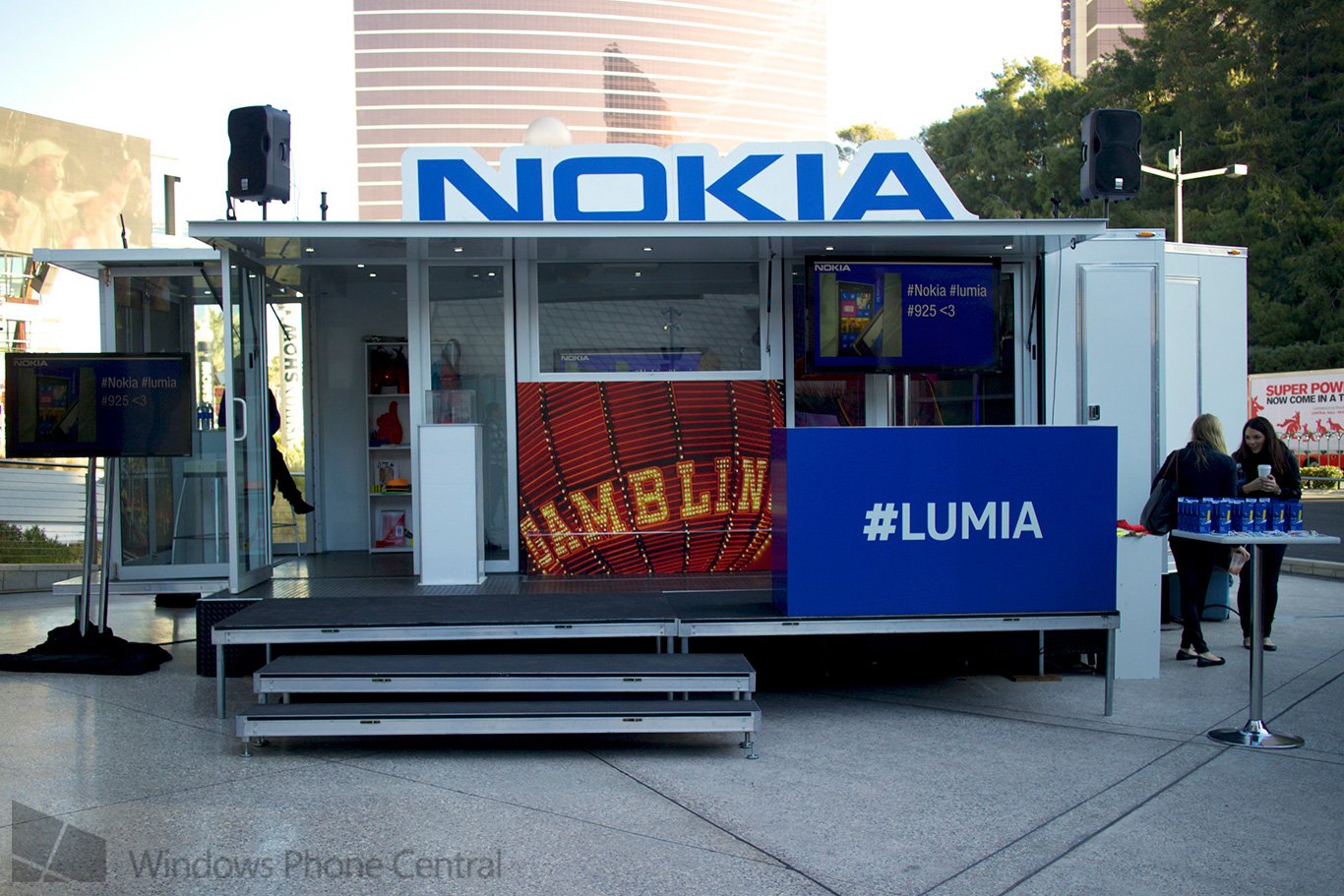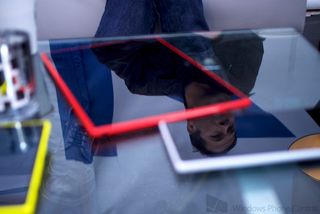Nokia: 2013 was about getting the apps, 2014 will be about making them great
Our CES interview with Nokia on developer goals this year

2013 will go down as a watershed year for Windows Phone. High profile devices like the Lumia 1020 garnered massive press attention while the super affordable Lumia 520 actually drove Windows Phone adoption. Starting in the last quarter, a new push for must-have apps was launched through the efforts of Microsoft and Nokia. Apps like Instagram and even a renewed WhatsApp became staples of the platform.
Here at CES, Windows Phone has a lighter presence this time around. No new phones are being announced and Microsoft is holding back news until Build later this spring. But that doesn’t mean Microsoft and Nokia aren’t present and we’re sitting down with both of them today.
First up is Bryan Biniak, Global Vice President & General Manager at Nokia. We spoke with him this morning about developer challenges with Windows Phone heading into 2014.
High prospects, but there’s more to do
Nokia’s message has been very upbeat recently, and Biniak is partly responsible for that. Biniak’s job is to get developers to make apps for the Windows Phone OS, and while that job is getting easier these days – partly due to BlackBerry’s demise – it’s not without its trials either. While Nokia’s goal is to get all developers to consider Microsoft’s OS when making apps, it’s not about quantity. Biniak constantly reminds us that “to win, they [apps] have to be better” on Windows Phone. That message was also conveyed by Microsoft back in November with their ‘critical mass’ statement. It shows that in order for Windows Phone to be a contender, it’s not just about having the app available, it also has to be compelling to the user.
One of the issues Biniak and Nokia have to deal with is convincing developers that it’s worth their time – and money – to invest in the Windows Phone platform. Sometimes that involves just a simple meeting with the developer to break the ice, but other times incentives are used. For instance, some companies just don’t want to hire a new employee. Many startups are very family-like in their endeavor, requiring like-minded thinking. Simply hiring someone for a platform that you’re unsure about it requires significant investment and risk. But Biniak notes “When companies hire people internally, you know you won” and Nokia is seeing that happening more frequently these days.

Still, there are other times when companies are not yet ready to do it all in-house. Here, Nokia will offer to outsource the development, doing the app themselves for a fee that could be 1/3 the cost of hiring a permanent, dedicated coder.
Biniak is also concerned about monetization of a company’s app. It’s more than just recouping the costs of development, but the ongoing operational costs of maintaining that app. Case in point would by Glympse, who released a Windows Phone app back in 2011 but have not continued support, even though the Windows Phone 8 OS is now much more conducive to their tracking service. Situations like this is where Nokia wants to step in to re-vitalize interest (in fact, we passed that on to Nokia’s DVLUP team who are looking into it).
Get the Windows Central Newsletter
All the latest news, reviews, and guides for Windows and Xbox diehards.

A “meaningful experience”
Nokia’s long term strategy however isn’t just merely to prop up development of Windows Phone, but to serve as inspiration for companies looking to create an app for the platform. For Nokia, it’s about ensuring a successful marketing campaign, including reaching out to our site, and getting companies to take interest in Windows Phone on their own. “That tipping point is very important”, according to Biniak.
Apps like WhatsApp, Moliplayer, Groupon, Yelp, Line, Foursquare, and forthcoming Path, are all examples of Nokia’s efforts to deliver top-rated experiences on Windows Phone. Readers may recall that WhatsApp in 2012 was not exactly a winning hit on Windows Phone. Poor reviews and a plethora of bugs prevented it from reaching its potential. Starting in early 2013, Nokia began working with WhatsApp, and they now have Liz Ngo from Nokia to deliver their vision. If they need help, assistance or even deeper level access to the OS, they go to Liz. That kind of partnership is not very common in the smartphone industry, and it demonstrates what is at stake for Nokia (and Microsoft).
Even user incentives like the $20 voucher to the Windows Phone Store are part of this concerted effort by Nokia. By giving buyers of certain Lumia phones 20 bucks to spend on apps, which often run in the 99 cent range, it helps create a positive cycle in the system, making sure devs begin to see increased revenue and consumers dip their toe into the world of Windows Phone software.

The year ahead
So what’s next in 2014? Bluetooth 4.0 LE is coming to all Lumias with the Black update and that should be a sign for new wearable and connected technology support. We’ve hinted at some big-name official apps for smart devices either currently in development or about to start, and we’re sticking to that prediction.
Imaging will continue to get priority on Lumias as Nokia refines current tech and delivers new experiences. The quality of apps will continue to improve as Nokia guides companies to not only the best user experience, but unique ones as well. Nokia seems to be prepping for more big announcements at Microsoft’s Build conference in April, which Windows Phone Central will be covering in full force.
Finally, for Nokia it’s about “getting the basics right”. Is the app experience on Windows Phone “good, great or amazing?” Biniak says it needs to be the latter, as app volume simply won’t cut it in 2014. And that’s exactly what they’re seeking to achieve.

Daniel Rubino is the Editor-in-chief of Windows Central. He is also the head reviewer, podcast co-host, and analyst. He has been covering Microsoft since 2007 when this site was called WMExperts (and later Windows Phone Central). His interests include Windows, laptops, next-gen computing, and wearable tech. He has reviewed laptops for over 10 years and is particularly fond of 2-in-1 convertibles, Arm64 processors, new form factors, and thin-and-light PCs. Before all this tech stuff, he worked on a Ph.D. in linguistics, performed polysomnographs in NYC, and was a motion-picture operator for 17 years.